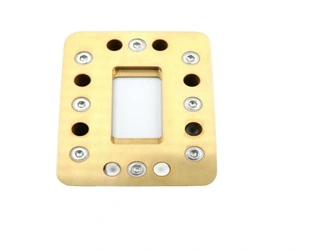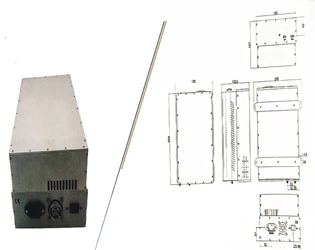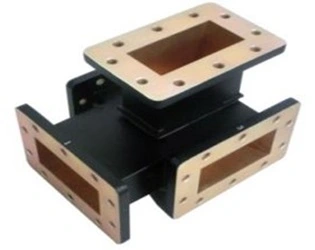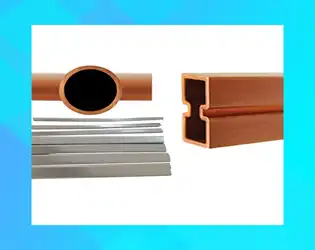BLOG

January 24, 2025
Waveguide pressure windows are critical components in microwave and RF systems, serving as protective barriers while allowing electromagnetic waves to propagate efficiently. The choice of material for these windows significantly impacts system performance, with quartz glass and polytetrafluoroethylene (PTFE) being among the most commonly used options. Understanding the advantages and disadvantages of these materials is crucial for engineers and system designers to make informed decisions that optimize their waveguide systems' performance, reliability, and cost-effectiveness.
January 24, 2025
The installation of an MMDS (Multichannel Multipoint Distribution Service) transmitting antenna is a critical process that requires careful attention to detail and precise execution. This comprehensive guide explores the essential steps and considerations for proper MMDS transmitting antenna installation, focusing on optimization techniques, safety protocols, and performance verification methods. Understanding these key elements ensures optimal signal transmission, minimizes interference, and maximizes coverage area while maintaining system reliability and efficiency.
January 24, 2025
Heat dissipation is a critical consideration in the design and operation of AC Power Amplifiers, directly impacting their performance, reliability, and longevity. As power amplifiers continue to evolve with higher power densities and smaller form factors, selecting the appropriate cooling method becomes increasingly crucial. This comprehensive analysis examines three primary cooling approaches - natural cooling, air cooling, and water cooling - evaluating their respective advantages and disadvantages in AC Power Amplifier applications, while considering factors such as efficiency, cost-effectiveness, maintenance requirements, and overall system reliability.
January 24, 2025
When designing a Conical Horn Lens Antenna, engineers must carefully consider multiple electromagnetic parameters and physical dimensions to achieve optimal performance. These critical factors directly influence the antenna's radiation pattern, gain, bandwidth, and overall efficiency. The design process requires a thorough understanding of the relationship between the horn's geometry, lens characteristics, and desired electromagnetic properties. Advanced Microwave Technologies Co., Ltd, with over two decades of experience in microwave products, has developed expertise in manufacturing low sidelobe lens horn antennas that combine conical or conical corrugated horns with plano-convex lenses, achieving superior performance through precise parameter optimization.
What is the typical structure of a waveguide offset short?
January 23, 2025
The waveguide offset short is a fundamental component in microwave engineering that plays a crucial role in various applications within the field of RF and microwave systems. This precision-engineered device consists of a carefully designed structure that creates a high-reflection termination point within a waveguide system. The typical structure incorporates a conducting plate positioned at a specific offset distance from the waveguide's central axis, creating a precise short-circuit condition. This configuration enables the device to reflect electromagnetic waves with minimal losses, making it an essential component for impedance matching, testing, and calibration in microwave systems.
When designing Magic Hybrid Tee, how to optimize the structure to achieve better port isolation?
January 23, 2025
The optimization of Magic Hybrid Tee structures for enhanced port isolation represents a critical challenge in microwave engineering. This comprehensive analysis explores the advanced techniques and methodological approaches to achieve superior isolation performance in Magic Hybrid Tee designs, focusing on structural modifications, impedance matching, and innovative design considerations that significantly impact the device's overall efficiency and functionality in various microwave applications.
How is the cut - off frequency of a waveguide tube?
January 23, 2025
The cut-off frequency of a waveguide tube represents a fundamental concept in microwave engineering and electromagnetic wave propagation. This critical parameter determines the lowest frequency at which electromagnetic waves can propagate through a waveguide structure, making it essential for designing and implementing effective microwave communication systems. Understanding the cut-off frequency is crucial for engineers and technicians working with waveguide components, as it directly impacts signal transmission efficiency and system performance. The cut-off frequency of a Waveguide Tube is determined by its physical dimensions and the propagation mode of electromagnetic waves within the structure. For a rectangular waveguide, the cut-off frequency depends primarily on the width of the guide's cross-section, while for circular waveguides, it relates to the diameter. This relationship between physical dimensions and operational frequencies makes waveguides highly versatile components in microwave systems, allowing for precise control over signal propagation characteristics.
What is the difference in cost and durability between plastic flange covers and metal flange covers?
January 23, 2025
In the world of microwave and waveguide systems, protecting flange connections is crucial for maintaining system integrity and performance. The choice between plastic and metal flange covers represents a significant decision point for engineers and system designers, with each option offering distinct advantages in terms of cost and durability. Plastic Flange Caps have emerged as a popular alternative to traditional metal covers, particularly in laboratory and assembly environments where frequent access and reconfiguration are common requirements. This comprehensive analysis explores the key differences between these two types of protective solutions, helping professionals make informed decisions based on their specific applications and requirements.




